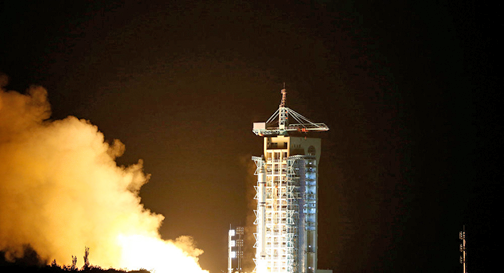
The Chinese launch of the Wukong satellite in December of last year.
Designed by the Chinese Academy of Science (CSA) is the Wukong satellite, which was launched on December 17, 2015, at the south launch site at the Jiuquan Satellite Launch Center—that satellite has now discovered 1.6 billion particles of dark matter.
This Dark Matter Particle Explorer, or DAMPE, satellite's main concern is the detection of high energy gamma rays, electrons and cosmic rays—locating these elements assists in finding the dark particles in space. This entire venture was initiated and worked on through the collaboration of universities in Italy, Switzerland and CSA. In December, this project will celebrate its first year anniversary.
Scientists in China will now scrutinise the information gathered by the Wukong satellite and will try to pinpoint the element that makes some particles five times more noticeable than the elements that are noticeable, those being unruffled of atoms and are believed to constitute the greater portion of the universe.
The project DAMPE required four years to be completed and is intended to make out potential dark-matter signatures in the space through a comprehensive study of the particles constructing the cosmic rays. Scientists believed that the dark-matter particles may extinguish or decompose and then turn out the high-energy gamma rays or otherwise known as cosmic rays, especially of electron–positron pairs.

